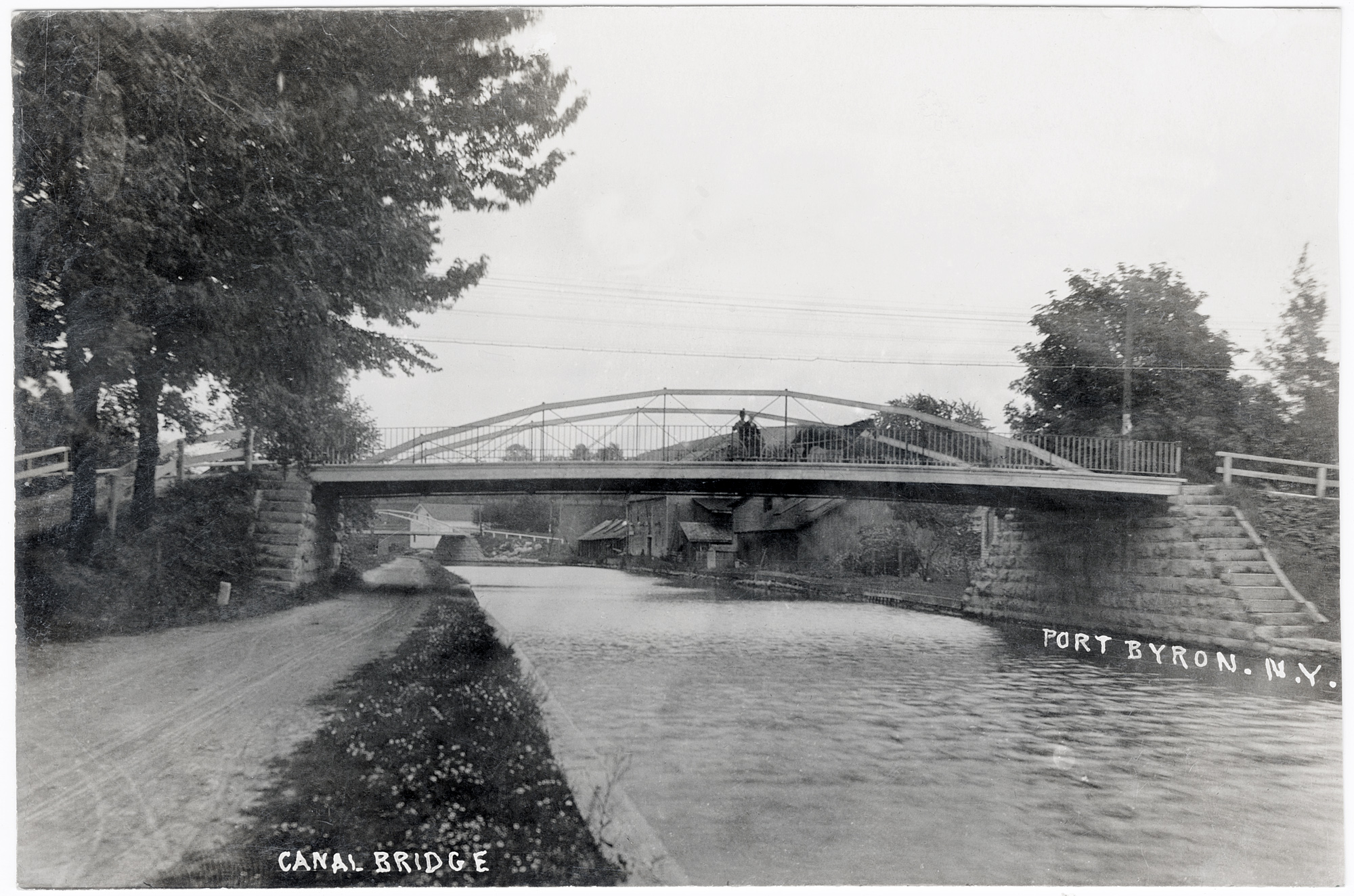The spring of 1918 would be very different for the three canal villages of Cayuga County. No longer would water fill the canal that had helped to shape the villages 98 years prior. No longer would the citizens hear the sound of tin horns blown by the passing boatmen. No longer would the kids have a place to swim, and fish, and maybe tease the mule drivers. No longer would old men be able to stand on the bridges and watch the boats pass by, speculating on where they were coming from or where they were going. Although the canal was officially closed in the fall of 1917, it was likely that the realization that it was gone forever didn’t hit people until the spring of 1918 when the canal stayed dry. The old canal was closed. The new larger and “better” Barge Canal was in use.
Certainly this was no surprise. The Barge Canal had been voted on as part of the elections of 1903 and although the canal villages of Montezuma, Port Byron, and Weedsport had voted against this course of action, the legislation had passed and the work started in 1905. The project was a radical redesign of the canal system, all paid for by the State taxpayers. In contrast to the 48 mile long Panama Canal being constructed by the Federal government, the people of New York took on an even larger task of rebuilding nearly 500 miles of four canals. Over the course of 12 years, New York’s canals would be made wider and deeper, and the locks would be three times the size of the older ones. The natural rivers and lakes would be “canalized” by building locks and dams. In places where there were no rivers or lakes, the old canal might be enlarged or a totally new canal would be constructed. The new canal would pass around the cities of Schenectady, Syracuse, and Rochester, along with many of the small villages it had helped to create. In Cayuga County, the new canal used the Seneca River; this meant that the canal would be shifted north away from the villages and most of the settlement. Interestingly, in 1817, it was recognized that the land around the river was swampy and not suited to building. And that condition never really changed, so when the canal was moved into the river, it was largely inaccessible to everyone in Cayuga County. Boats that had once stopped at stores and bars would now pass by without notice.
Through the winter of 1917/18, contractors moved in to remove much of the 1856 Montezuma Aqueduct. The oak boards that held the water were ripped out and burned in the contractors steam engines. One by one, the large limestone blocks were removed, set on a small train and dumped along the old canal on the Seneca County side of the river. Once the stonework and wood was removed, a dredge was brought in to pull out the 30 foot long piles and foundation that had held the weight of the structure for 52 years. But the entire aqueduct was not removed, only the part that blocked the navigation channel. Three arches were left on the west bank, and eight arches were left along the right. Yes, 1918 would be a very different spring.
There were longer term effects to be felt. And these would spread out over the coming years. Decisions had to be made as to what to do with the large open ditch that ran through the middle of the villages. The many bridges that were made famous by the phrase, “Low bridge, everybody down!”, had to be taken down and canal filled to traffic could cross. Weedsport thought about turning sections of the old canal into a reservoir for fighting fires. Montezuma thought about a fish nursery. In the end, the canal became parts of Route 31, was filled in for schools and housing, or just left.
To service the few that still wished to ship on the canal, a terminal wall was built at Weedsport. In the 1920’s, the Standard Oil built an oil tank complex at Weedsport where oil and gas could be brought in during the shipping season to provide fuel for the long winter. In the years before pipelines, much of the oil and gas that New Yorker’s used was brought in by canal and stored in tank farms.
In 1918, would the people who marked the passing of the old canal think that 100 years into the future, the new canal would still be in operation? As of 1918, the Barge Canal has been in operation two years longer than both versions of the Erie that preceded it. It is a working museum piece with century old technology that operates much like it did when it first opened. And it remains very accessible. Be sure to visit it this year. You don’t have to travel far to see it and the canal it replaced. In Cayuga County, you can find nice remains at the Centerport Aqueduct Park near Weedsport, Schasel Park, and the Port Byron Erie Canal Heritage Park in Port Byron, and perhaps the best collection of canal sites in the state at the Montezuma Heritage Park.
